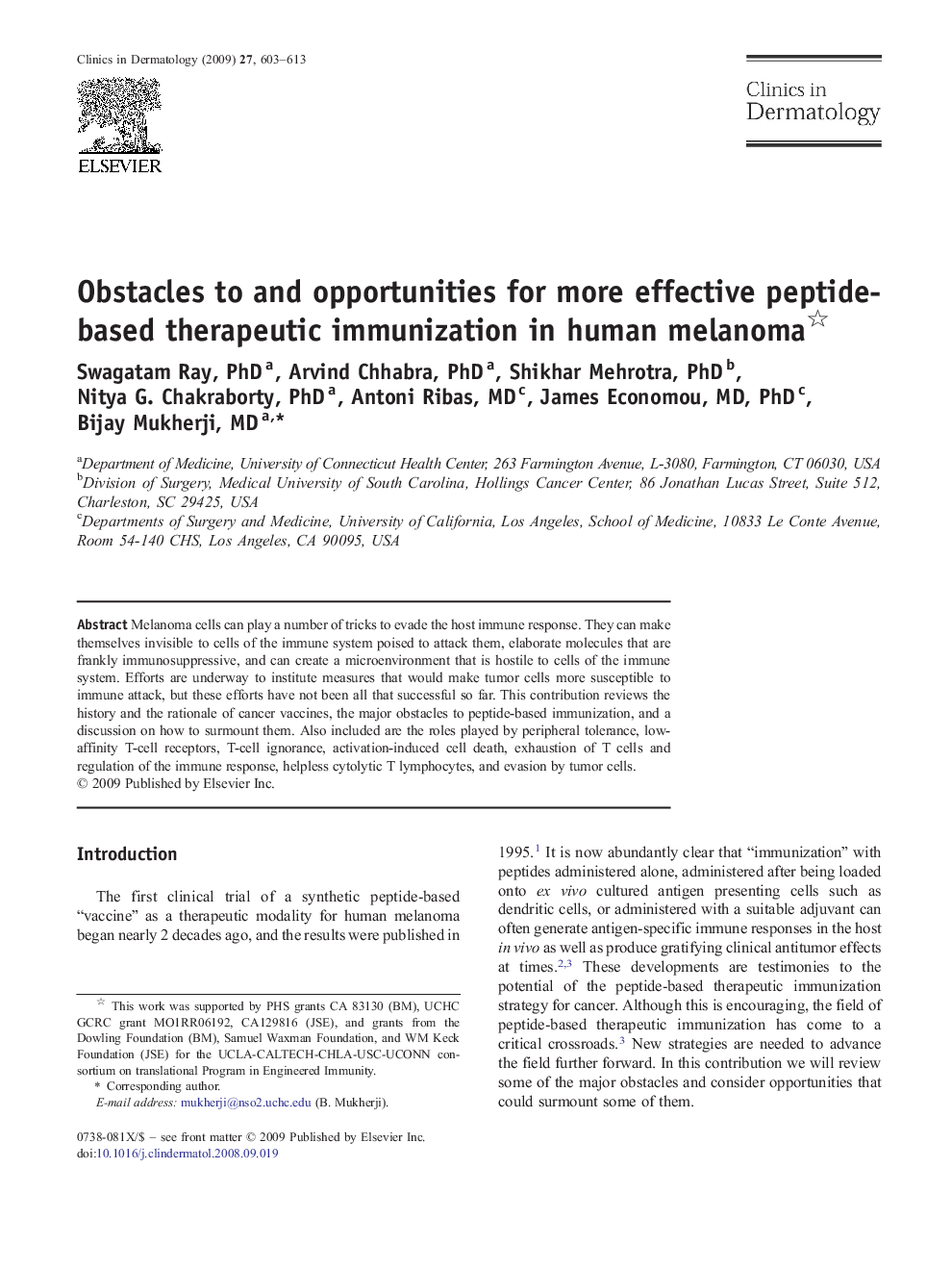| Article ID | Journal | Published Year | Pages | File Type |
|---|---|---|---|---|
| 3194908 | Clinics in Dermatology | 2009 | 11 Pages |
Melanoma cells can play a number of tricks to evade the host immune response. They can make themselves invisible to cells of the immune system poised to attack them, elaborate molecules that are frankly immunosuppressive, and can create a microenvironment that is hostile to cells of the immune system. Efforts are underway to institute measures that would make tumor cells more susceptible to immune attack, but these efforts have not been all that successful so far. This contribution reviews the history and the rationale of cancer vaccines, the major obstacles to peptide-based immunization, and a discussion on how to surmount them. Also included are the roles played by peripheral tolerance, low-affinity T-cell receptors, T-cell ignorance, activation-induced cell death, exhaustion of T cells and regulation of the immune response, helpless cytolytic T lymphocytes, and evasion by tumor cells.
